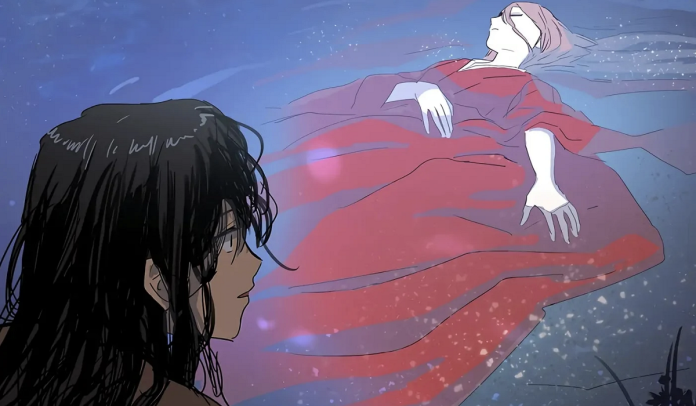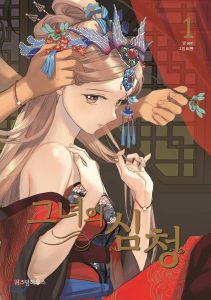 Her Tale of Shim Chong
Her Tale of Shim Chong
Writer: Seri
Artist: Biwan
Colour Assistance: Yama & Piro
Translation: Steven Edwards
Platform: Tapas, TappyToon, pocket comics
Publication Date: October 22, 2023
Rating: Teen
Genre: VSC (Korea), Drama, Historical, Girl’s Love, Utena-like
There’s an old story from Korea that goes something like this: once upon a time in Peach Blossom Village, there was a girl named Shim Chong. Her father was a blind man left to beg on the streets for money. One day, a Buddhist monk demanded three hundred bags of rice from him. He could never hope to pay such a fee. But in a grand act of filial piety, Shim Chong sold herself to sailors to pay her father’s debt. They sacrificed her to the Indang Sea.
The tale of Shim Chong has been retold many times. In some versions, she is saved from the waters to marry the emperor of China. In others, she stands as a tribute to the sacrifices that daughters make for their families. The comic series Her Tale of Shim Chong, written by Seri and illustrated by Biwan, asks the reader a very different set of questions. What was Shim Chong thinking when she gave herself up to save her father? Why should any daughter be expected to throw her life away for a man? Does the story’s tidy moral disguise a darker tale entirely?

The heroine of Her Tale of Shim Chong is a filthy, tomboyish beggar who steals from her neighbors. She has no choice because her blind father is too tired to beg anymore. He would starve if she did not put food on the table. Out of necessity, Shim Chong cast away her scruples and naivete. But there is just enough kindness left in her heart that one night, when she finds a noblewoman drowning in the ocean, she drags her to land.
This noblewoman turns out to be Chancellor Jang’s young bride-to-be. Shim Chong is rewarded with an invitation to her wedding. The two of them become friends despite their different social classes. Mrs. Jang even goes so far as to hire Shim Chong as an aide. Then the Chancellor becomes ill, and rumors spread that his wife is a fox spirit destined to ruin the Jang household. Could Jang’s young wife be hiding a deeper secret? What does she want from Shim Chong? Is Shim Chong herself doomed to drown in the Indang Sea?
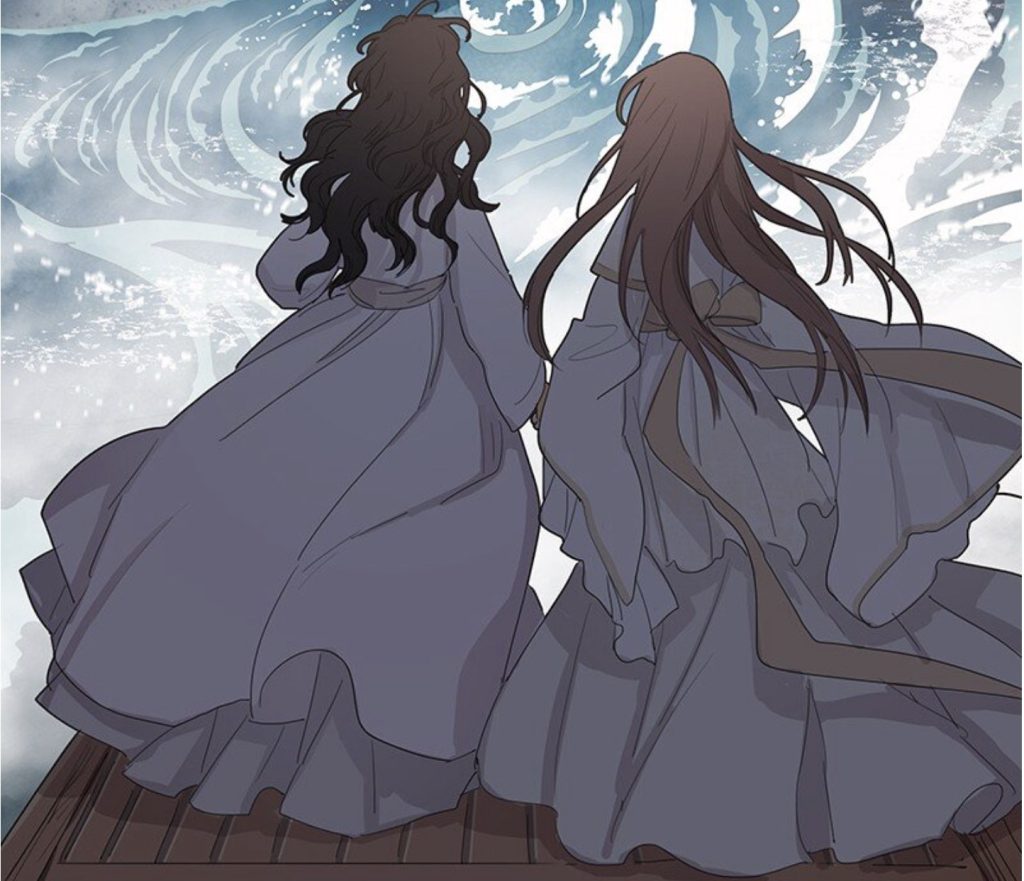
The relationship between Shim Chong and Mrs. Jang evolves rapidly from maid and mistress, to partners in crime against the extended Jang family, to best friends and lovers. They cannot stand on equal footing because Mrs. Jang is so much wealthier. Yet the two do learn from each other. Mrs. Jang teaches Chong that she is worthy of love. Chong gives Mrs. Jang a crash course in self-sufficiency. It turns out that spending your entire life in preparation for marriage can be just as crushing as life on the streets.
Her Tale of Shim Chong is at its root a story of feminist solidarity. Shim Chong and Mrs. Jang are both harmed by the patriarchy even though they are divided by social standing. Chong’s village rejects her as an outsider unworthy of respect. Mrs. Jang is taught from birth that her wants are no more important than those of a dog. These two women and their peers are only allowed to exist and express themselves in certain ways. Those who do not conform are cut down.
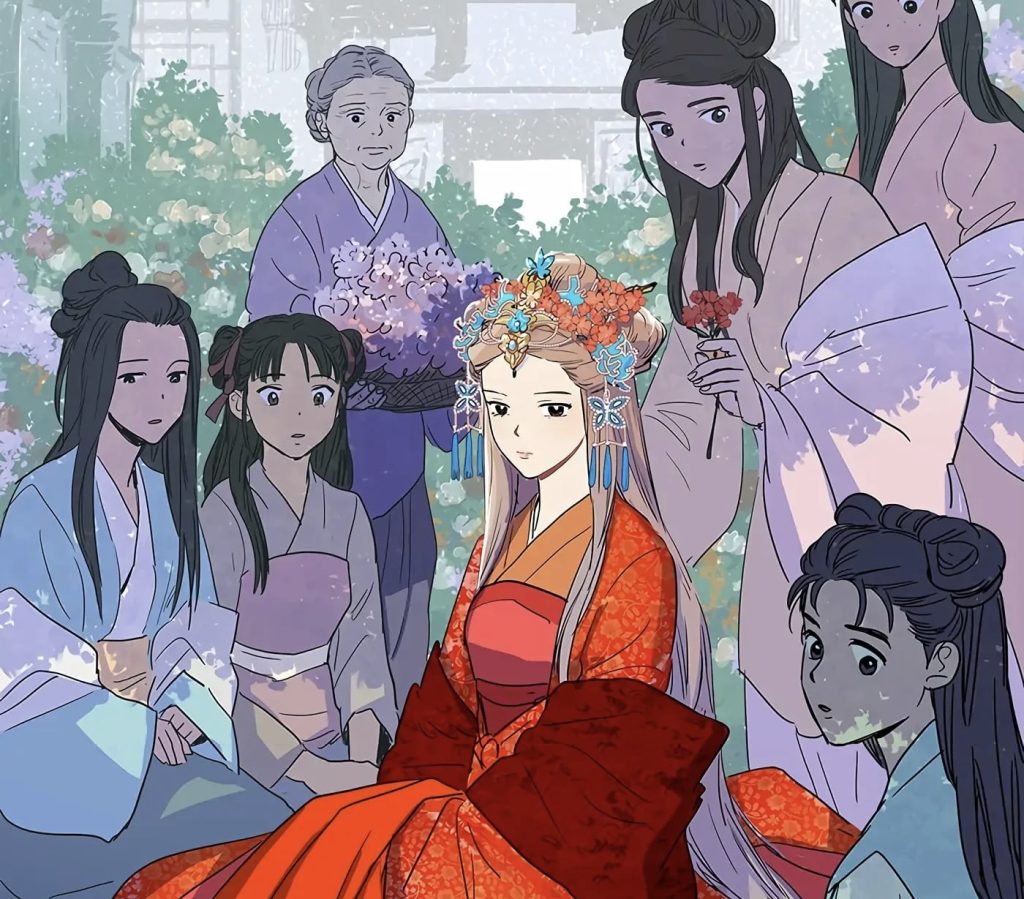
The series is particularly good at digging into how people respond to oppression, and how lived experiences differ. At the beginning of the story, Shim Chong doesn’t care at all about how other people see her. Then Mrs. Jang teaches Chong about clothing, posture and make-up. She hopes that if Chong just presents herself differently, her village will respect her.
At first, this works perfectly. Then the local men start groping Chong and talking down to her. Even the local monk, who was kind to Chong before, lashes out when he sees her new self-confidence. As far as Jang is concerned, that’s just what it means to be a woman in society; you carry whatever baggage other people give you. Yet Chong can’t help but wonder if that is really the right answer. Why shouldn’t women be able to dress or act however they like?
Flowers are a motif throughout Her Tale of Shim Chong. Mrs. Jang is adorned with flowers at her wedding ceremony as is custom. Shim Chong herself is associated with the lotus flower. The comic, though, lays out its thesis from the very first chapter: “a flower in bloom is loved by all, but once that affection fades, nobody cares for its cries as they watch it fall.” Shim Chong and Mrs. Jang are not flowers but people. To be cut and “preserved,” whether as a sacrifice or as a wife, is murder, not remembrance.

I could imagine some folks making the argument that Her Tale of Shim Chong’s feminism is too modern; that it defaults to contemporary arguments rather than doing the research required to excavate past psychologies. I don’t particularly mind, though, because feminism in South Korea remains a hard-fought battleground. Even something as simple as a character cutting their hair in this narrative (once again) is symbolically significant. Her Tale of Shim Chong is proof that Korean comics can be political, even at the corporate height of the Korean wave.
Another complaint might be that the comic’s male characters can be one-dimensional. This hits closer to home for me; the various cruel male characters in this story are closer to cartoon villains than the kind of bad people you’d find in real life. But the men aren’t the subject of this story to begin with. It’s all about the women, and they are consistently well-characterized.
Shim Chong’s journey from reactive child to conscious adult would be enough to build a narrative around. Then you have Mrs. Jang, who is simultaneously lovable, pitiable, and manipulative. These two characters are failed in so many ways by society, yet can’t help but hurt each other due to their respective traumas. It’s a dose of reality that a story like this needs.
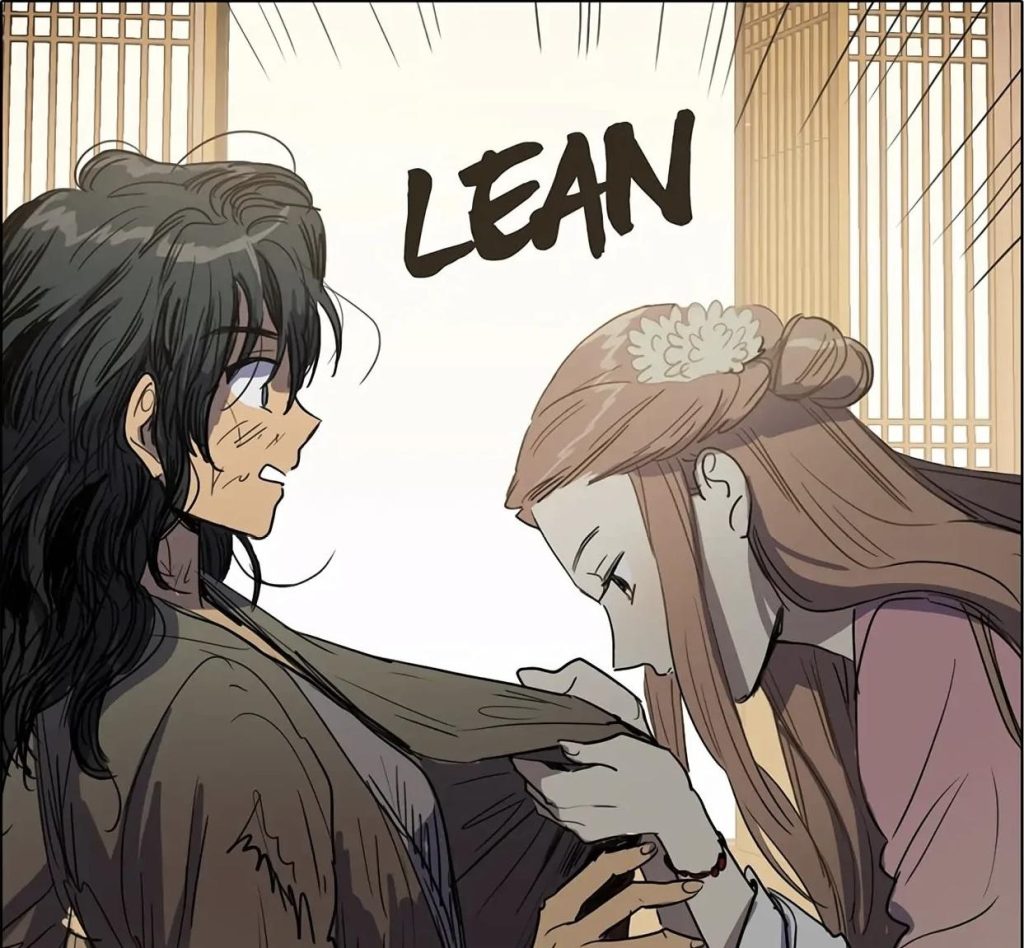
Another character I found memorable is Shim Chong’s friend Ditchdok. A village shaman with a son to feed, she draws power rather than despair from her status as an outcast. You can’t help but sympathize with her from the start as a modern woman who doesn’t care what anybody else in the story thinks. So when we see just how much she mistrusts Mrs. Jang, and fears what she intends to do to Shim Chong, we can’t help but ask ourselves: who can we trust in this scenario? Ditchdok’s feelings further complicate the scenario so that it never feels too didactic.
Biwan’s art is functional although not necessarily excellent. I enjoyed how backgrounds sometimes capture the wispy imperfection of classic ink paintings. At other times, though, the dreaded stock foliage and buildings present in other Korean comics make themselves known. The character art is generally on steadier ground, although Shim Chong’s appearance is rapidly cleaned up so that she’s a more conventional comic heroine. The line art also decreases in detail following the excellent first two chapters. This is just another way that comics negotiate between artistic ambition and the crushing schedules necessitated by Korean platforms.
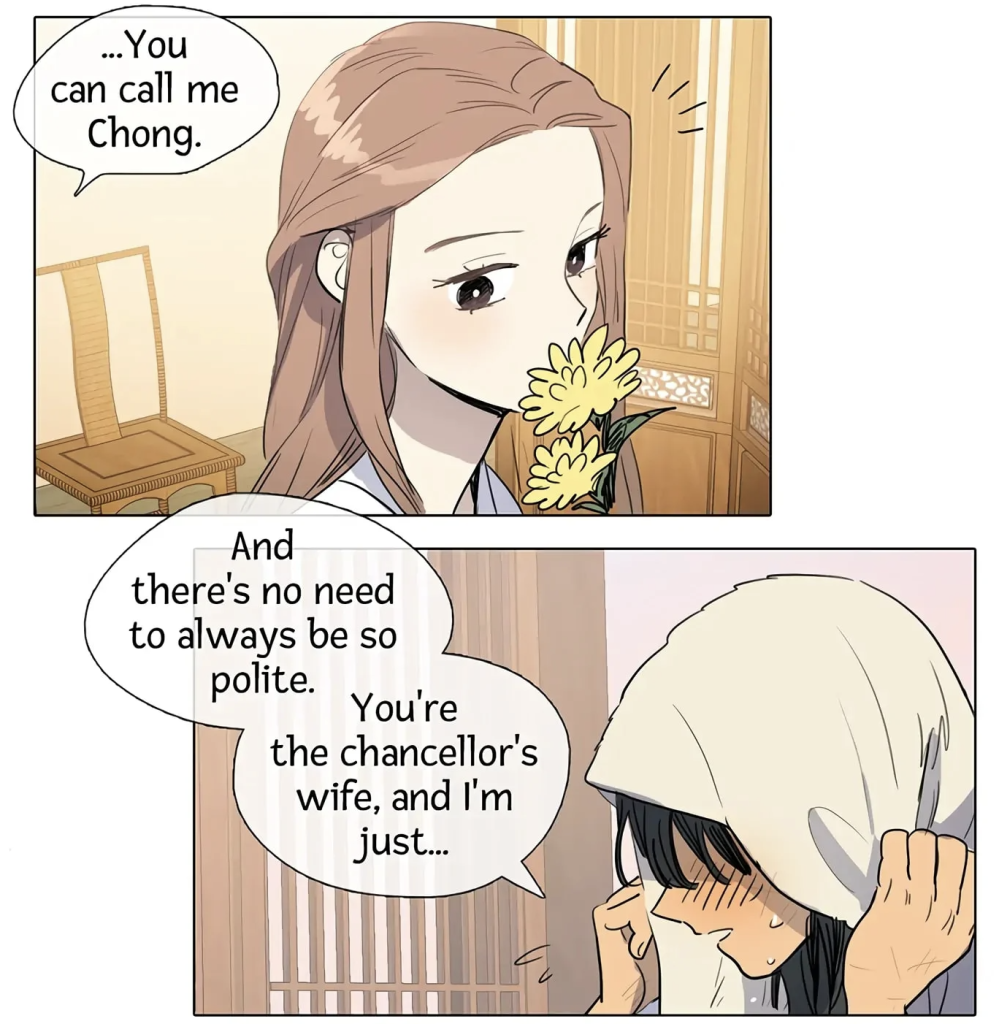
One thing that surprised me was the rarity of visual intimacy between Shim Chong and Mrs. Jang throughout the series. We’re only given one kiss between the two of them at the very end; other scenes before this point are obscured via paneling and perspective. It’s even possible to blink and miss these sequences if you don’t read closely. I can’t help but wonder if Seri and Biwan were restricted by content guidelines, considering that this is otherwise a very outspoken narrative about two women rejecting societal heteronormativity.
Her Tale of Shim Chong is a very good comic up until about the last 20 chapters. Then it explodes into action. Everything comes together—Mrs. Jang’s fear, Ditchdok’s anger, Shim Chong’s fate under the waves, and even a trace of the supernatural—for a wild and angry climax that had me punching the air while I was reading. I won’t say whether the ending is happy or sad. But it was exactly the catharsis I needed after a tale like this.
The moral of the original Shim Chong tale was that sacrificing yourself for your family is the morally correct thing to do. Her Tale of Shim Chong is not about that. As Chong says to the men about to drown her in the ocean: “You shameless bunch of bastards. I hope you all go to hell.” Honestly? That’s a lesson worth taking into 2025.

